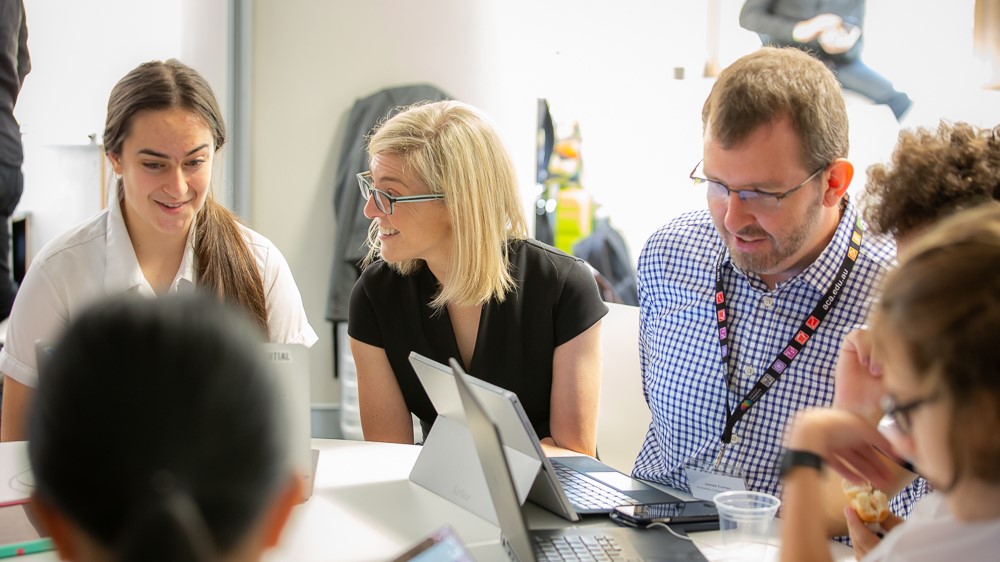Australia’s next generation of cyber professionals will now be able to start their professional journey in the classroom, following the launch of a $1.35 million program to teach cyber security in schools.
The ‘Schools Cyber Security Challenges (Cyber Challenges)’, which will see cyber security taught to high school students, is a collaboration between AustCyber, ANZ, Commonwealth Bank, National Australia Bank, Westpac and British Telecom.
“This is an Australian first,” said AustCyber CEO Michelle Price. “The first time Australia has ever seen a nationally consistent, nationally rolled out package of activities and competencies for Australian high school students that support teachers to be able to deliver this in the classroom consistently.”
“It also means that our next generation of workers in Australia are going to be globally competitive but also have the global edge over their counterparts.”
Appearing via video link, Minister for Industry, Science and Technology Karen Andrews welcomed the initiative.
“Cyber security skills are now not only essentials for our digital toolbox, they are critical to meeting the fast-growing demand in Australia for cyber specialists. This means exciting career paths ahead for young Australians,” said Andrews.
The program is comprised of four unique and interactive cyber security focused challenges, the first of which was unveiled at St Andrew’s Cathedral School in Sydney on Tuesday.
Specifically, the challenges are designed to illustrate to students the risks that come with social media and online activity.
Each of the challenges has also been created so to align with the Digital Technologies curriculum.
Speaking at the launch event academic director of the Australian Computing Academy, James Curran, who also co-authored the Australian Digital Technologies curriculum, explained that the challenges highlighted the importance of cyber security skills in the real world.
“In the first challenge, students in years 7 to 12 join their schools’ white hat security team – which every school should have – and develop skills in extracting information from social media,” he said.
“Using good unique passwords, password managers and two-factor authentication, students see from a hackers’ perspective how easily their shared personal information can be used to gain their trust, guess passwords and security questions and access their accounts.
“These are all inspired by real world examples encountered by our partners.”
He gave the example of parents sharing first day of school or 18th birthday photos of their children on social media, and how malicious actors can use this information to falsify an identity.
Teaching the teachers
While the value of teaching skills in cyber security to students is clear enough, the logistics of bringing this training to the classroom still provides additional challenges.
“There’s an assumption now that teachers coming out of initial teacher education programs are ready to lead schools in terms of digital technologies around Australia,” continued Curran.
“That is absolutely not the case.
“Right now, I think the majority of teacher education programs are still teaching something that doesn’t look that different to 1980s ICT.
“We have a huge way to go in convincing all of our universities to take this kind of thing seriously in initial teacher education, and providing more updates for teachers who are already in service.”

Dr Michael Spence. Source: Supplied
Vice chancellor of the University of Sydney Dr Michael Spence compared aspects of the challenge to the revamped University of Sydney undergraduate curriculum.
“The future is without doubt everybody’s business,” Spence said. “Sometimes when you hear a politician talk, you assume that we need more people in STEM education because the future is going to be all for the techies and the rest of us will be passengers.
“We know that even in the world of cyber security, that’s just not true.
“Everybody is going to have to grapple with a future that technology is bringing and that’s why it’s so crucial that this is a program that is open to students who see their careers in a whole variety of different areas, students from right across the school.”










